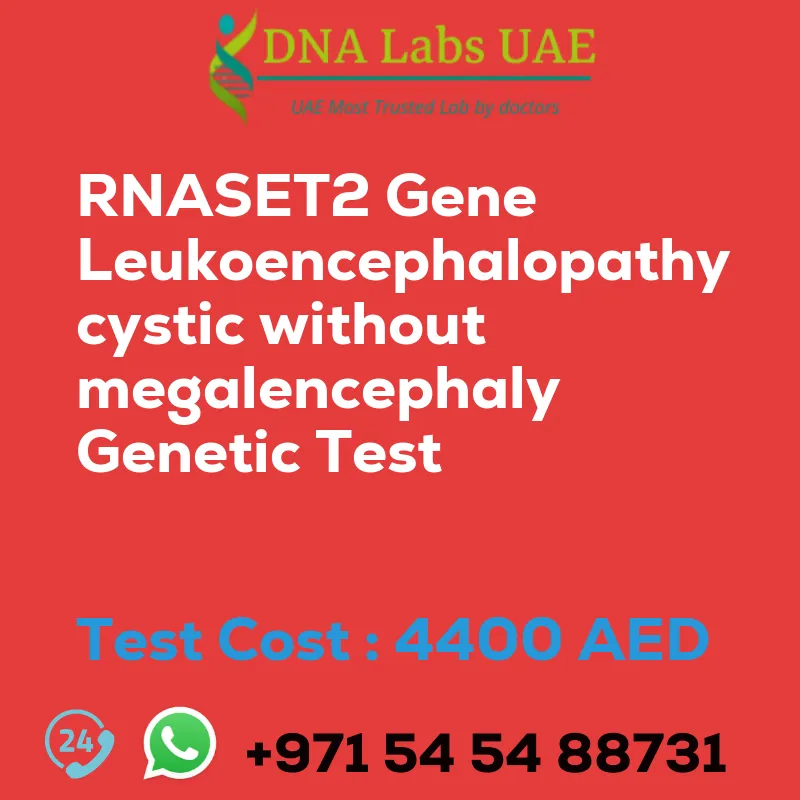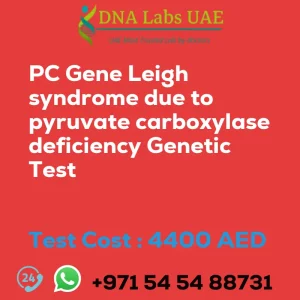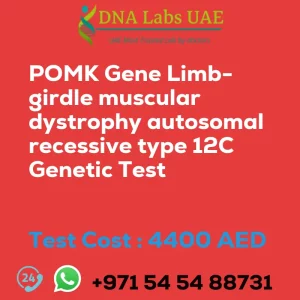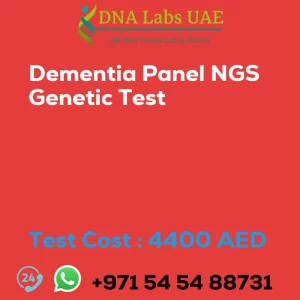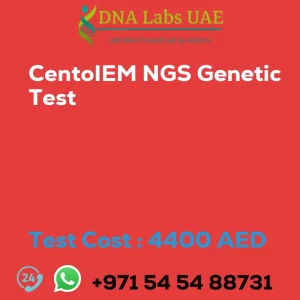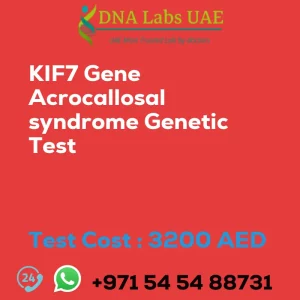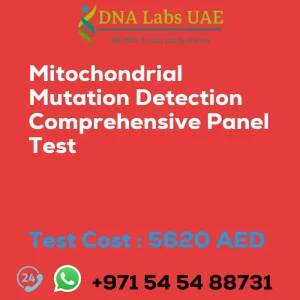RNASET2 Gene Leukoencephalopathy cystic without megalencephaly Genetic Test
Components: RNASET2 Gene Leukoencephalopathy cystic without megalencephaly Genetic Test
Price: 4400.0 AED
Sample Condition: Blood or Extracted DNA or One drop Blood on FTA Card
Report Delivery: 3 to 4 Weeks
Method: NGS Technology
Test Type: Neurological Disorders
Doctor: Neurologist
Test Department: Genetics
Pre Test Information: Clinical History of Patient who is going for RNASET2 Gene Leukoencephalopathy, cystic without megalencephaly NGS Genetic DNA Test. A Genetic Counselling session to draw a pedigree chart of family members affected with RNASET2 Gene Leukoencephalopathy, cystic without megalencephaly.
Test Details
RNASET2 gene leukoencephalopathy, cystic without megalencephaly is a rare genetic disorder characterized by the degeneration of white matter in the brain. This condition is caused by mutations in the RNASET2 gene, which provides instructions for producing an enzyme called ribonuclease T2. This enzyme is involved in the breakdown of RNA molecules.
A genetic test, such as Next-Generation Sequencing (NGS), can be used to identify mutations in the RNASET2 gene. NGS is a high-throughput sequencing technology that allows for the simultaneous analysis of multiple genes or even the entire genome. This test can help confirm a diagnosis of RNASET2 gene leukoencephalopathy and identify specific mutations in the gene.
The symptoms of RNASET2 gene leukoencephalopathy, cystic without megalencephaly typically begin in childhood or adolescence and may include progressive neurological problems such as difficulty walking, muscle weakness, loss of coordination, seizures, and cognitive impairment. Brain imaging studies may reveal cystic changes in the white matter of the brain.
Genetic testing can be beneficial for individuals with suspected or confirmed RNASET2 gene leukoencephalopathy, cystic without megalencephaly, as it can provide a definitive diagnosis, help predict the course of the disease, and inform genetic counseling for affected individuals and their families. It may also aid in the development of targeted treatments or interventions in the future.
| Test Name | RNASET2 Gene Leukoencephalopathy cystic without megalencephaly Genetic Test |
|---|---|
| Components | |
| Price | 4400.0 AED |
| Sample Condition | Blood or Extracted DNA or One drop Blood on FTA Card o |
| Report Delivery | 3 to 4 Weeks |
| Method | NGS Technology |
| Test type | Neurological Disorders |
| Doctor | Neurologist |
| Test Department: | Genetics |
| Pre Test Information | Clinical History of Patient who is going for RNASET2 Gene Leukoencephalopathy, cystic without megalencephaly NGS Genetic DNA Test A Genetic Counselling session to draw a pedigree chart of family members affected with RNASET2 Gene Leukoencephalopathy, cystic without megalencephaly |
| Test Details |
RNASET2 gene leukoencephalopathy, cystic without megalencephaly is a rare genetic disorder characterized by the degeneration of white matter in the brain. This condition is caused by mutations in the RNASET2 gene, which provides instructions for producing an enzyme called ribonuclease T2. This enzyme is involved in the breakdown of RNA molecules. A genetic test, such as Next-Generation Sequencing (NGS), can be used to identify mutations in the RNASET2 gene. NGS is a high-throughput sequencing technology that allows for the simultaneous analysis of multiple genes or even the entire genome. This test can help confirm a diagnosis of RNASET2 gene leukoencephalopathy and identify specific mutations in the gene. The symptoms of RNASET2 gene leukoencephalopathy, cystic without megalencephaly typically begin in childhood or adolescence and may include progressive neurological problems such as difficulty walking, muscle weakness, loss of coordination, seizures, and cognitive impairment. Brain imaging studies may reveal cystic changes in the white matter of the brain. Genetic testing can be beneficial for individuals with suspected or confirmed RNASET2 gene leukoencephalopathy, cystic without megalencephaly, as it can provide a definitive diagnosis, help predict the course of the disease, and inform genetic counseling for affected individuals and their families. It may also aid in the development of targeted treatments or interventions in the future. |

